Abstract
Taylor, Neil W. (Northern Regional Research Laboratory, Peoria, Ill.). Inactivation of sexual agglutination in Hansenula wingei and Saccharomyces kluyveri by disulfide-cleaving agents. J. Bacteriol. 88:929–936. 1964.—Mating types of both Hansenula wingei and Saccharomyces kluyveri can be activated to produce uniformly strong sexual agglutination by treatments with various solvents, such as 8 m LiBr. The strongly agglutinative mating-type preparations were irreversibly inactivated for sexual agglutination by various chemical treatments. Type 5 of H. wingei was inactivated by disulfide-cleaving reagents, but type 21 of H. wingei was not. Type 3 of S. kluyveri was more sensitive than type 26 of S. kluyveri to inactivation by disulfide-cleaving reagents. Comparison of sensitivities to these and other treatments, plus a moderately strong cross-agglutination between type 3 and type 21, indicated that the sexually agglutinative elements on type 3 are similar to type 5, and those of type 21 are similar to those of type 26. Inactivation-rate experiments showed a loss of agglutinative ability according to a sigmoid decrement with time for both types 5 and 21. The apparent extent of inactivation depended markedly on agglutination test conditions. Results of these experiments were interpreted to indicate tentatively, first, that the agglutinative elements of both types of a species are proteins and, second, that several agglutinating linkages are formed between any two cells in sexual agglutination.
Full text
PDF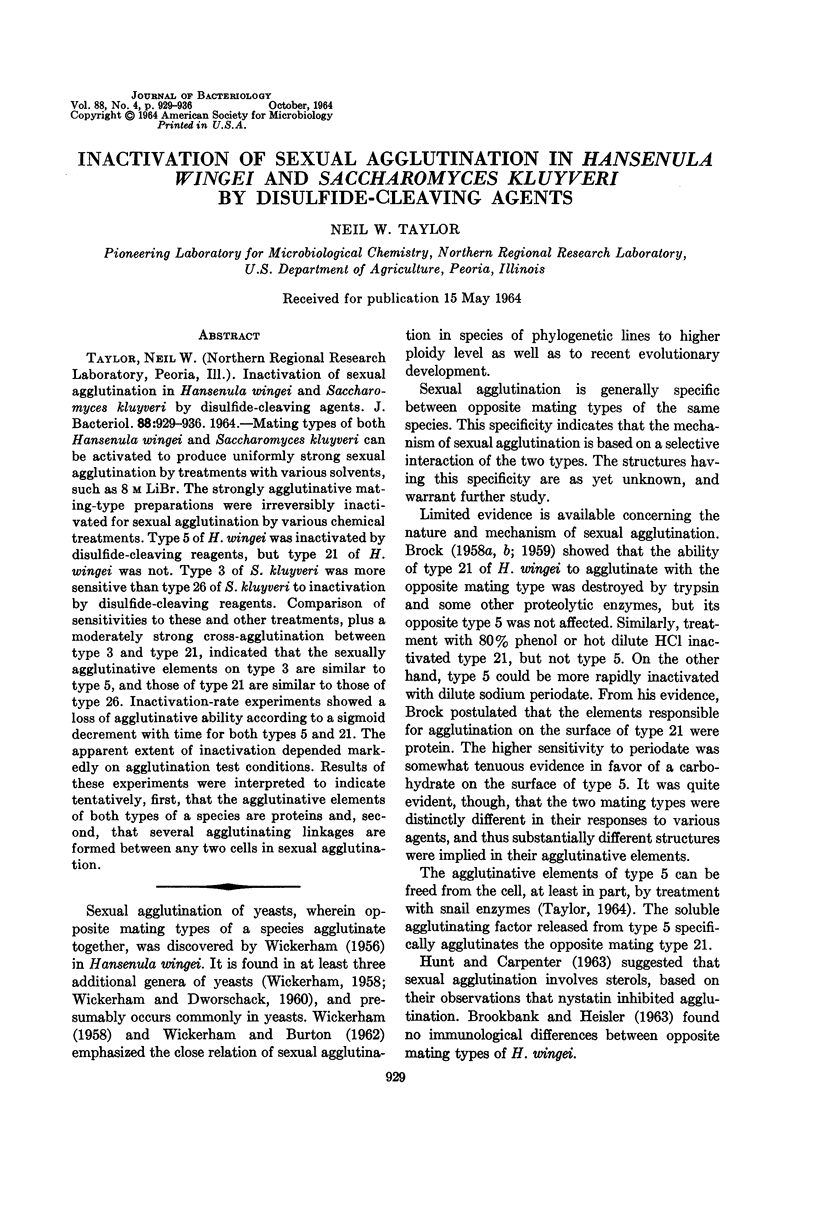
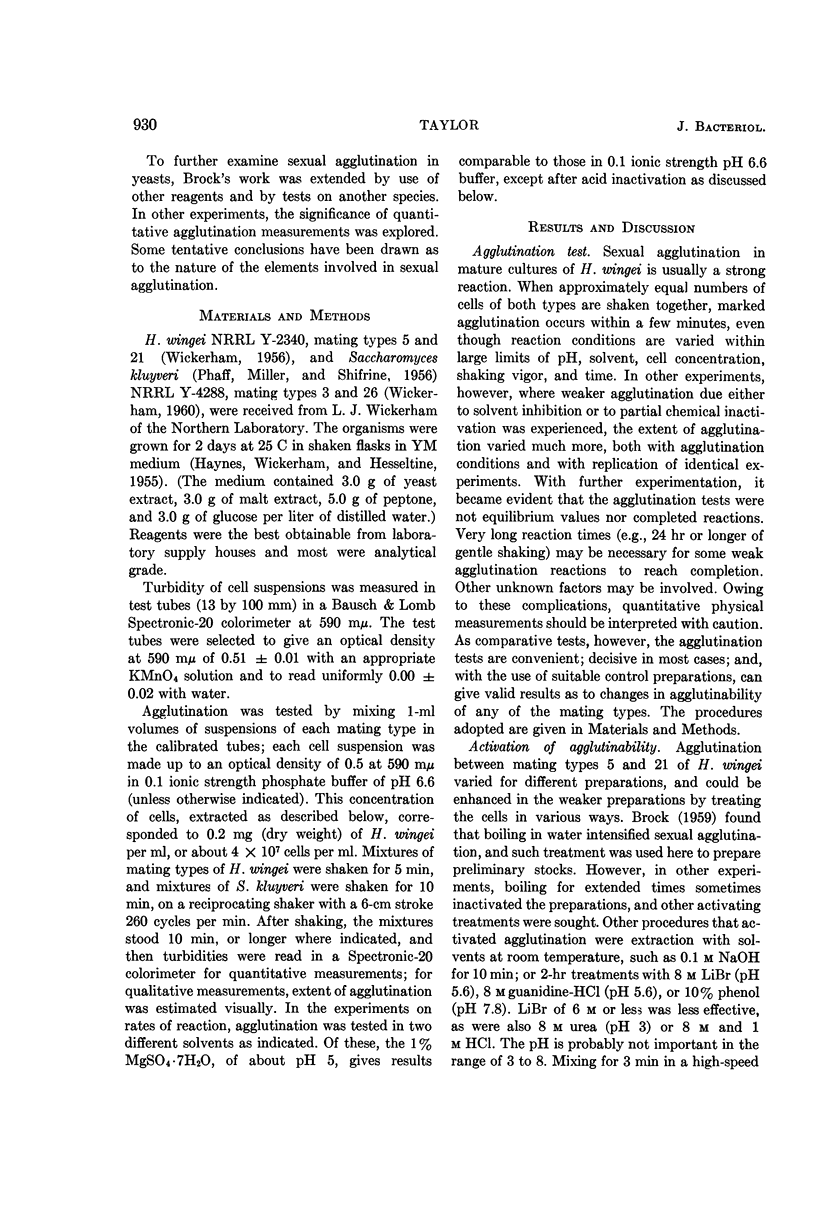
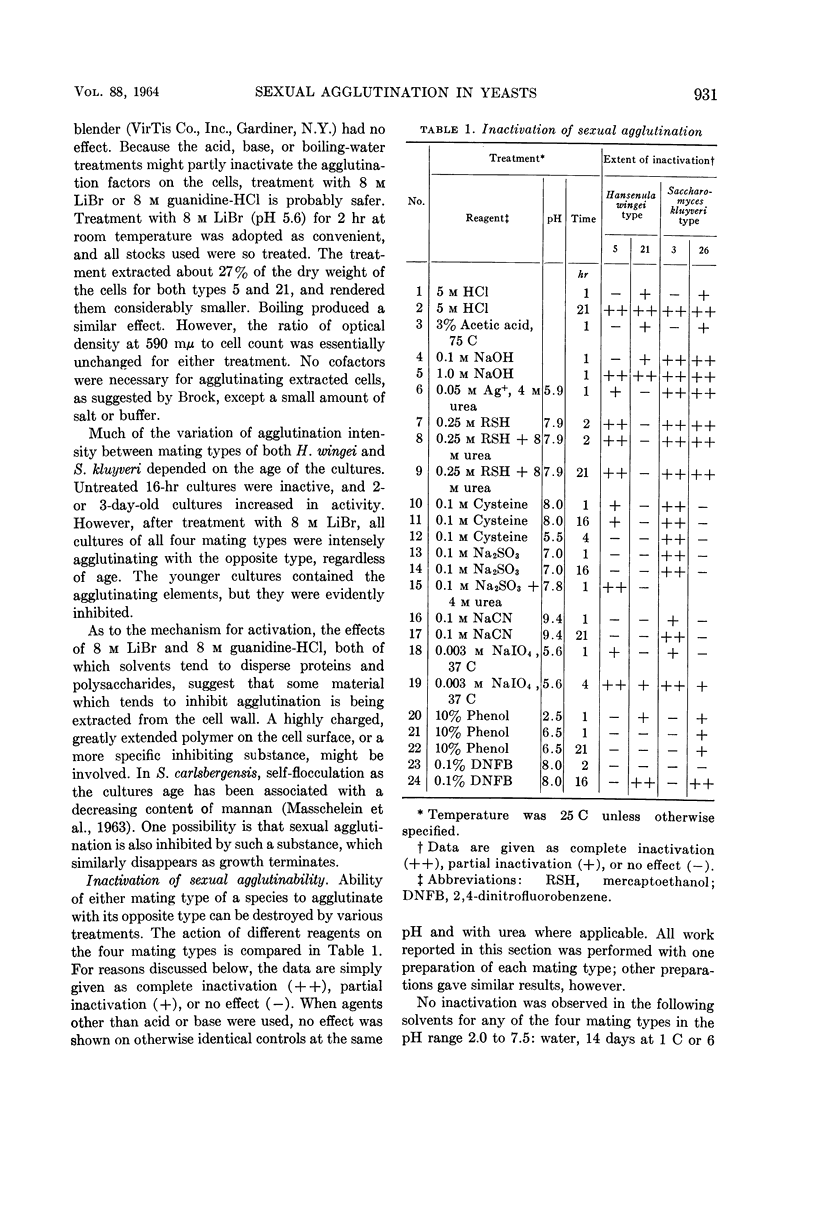
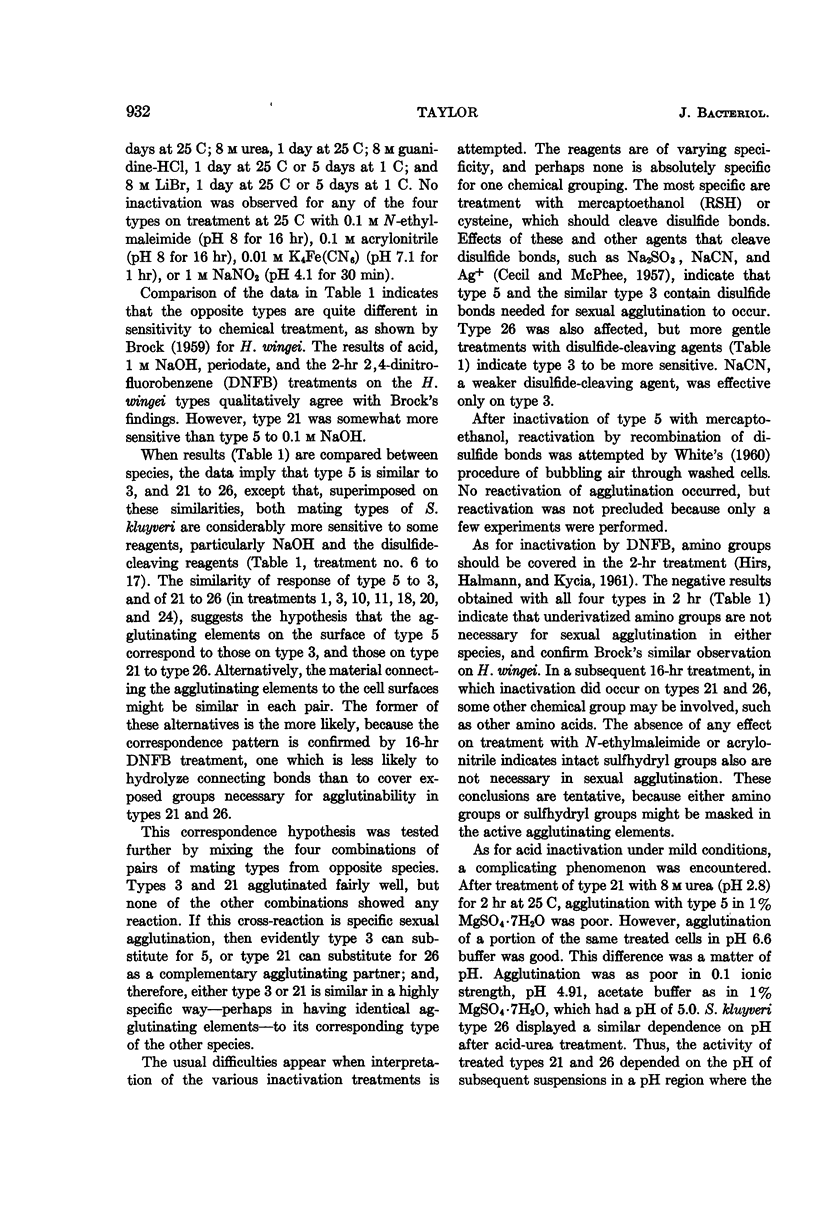
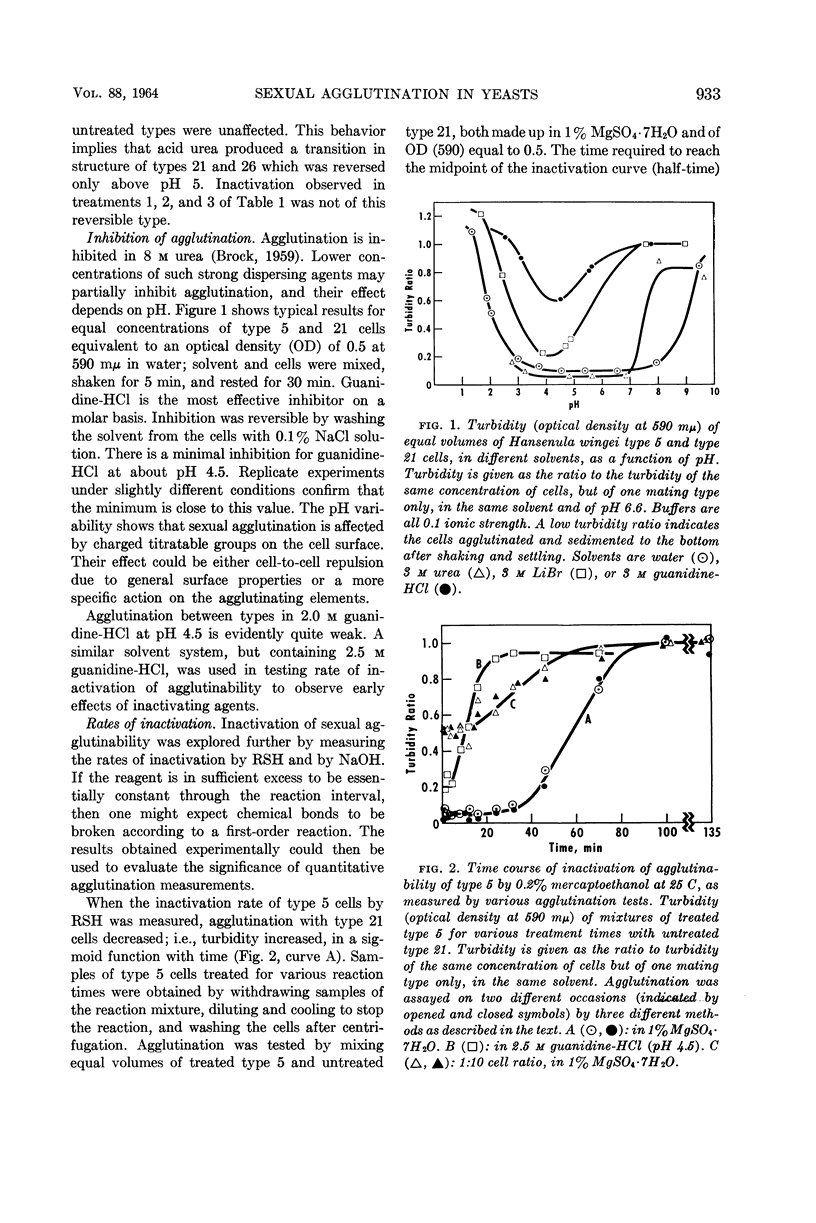
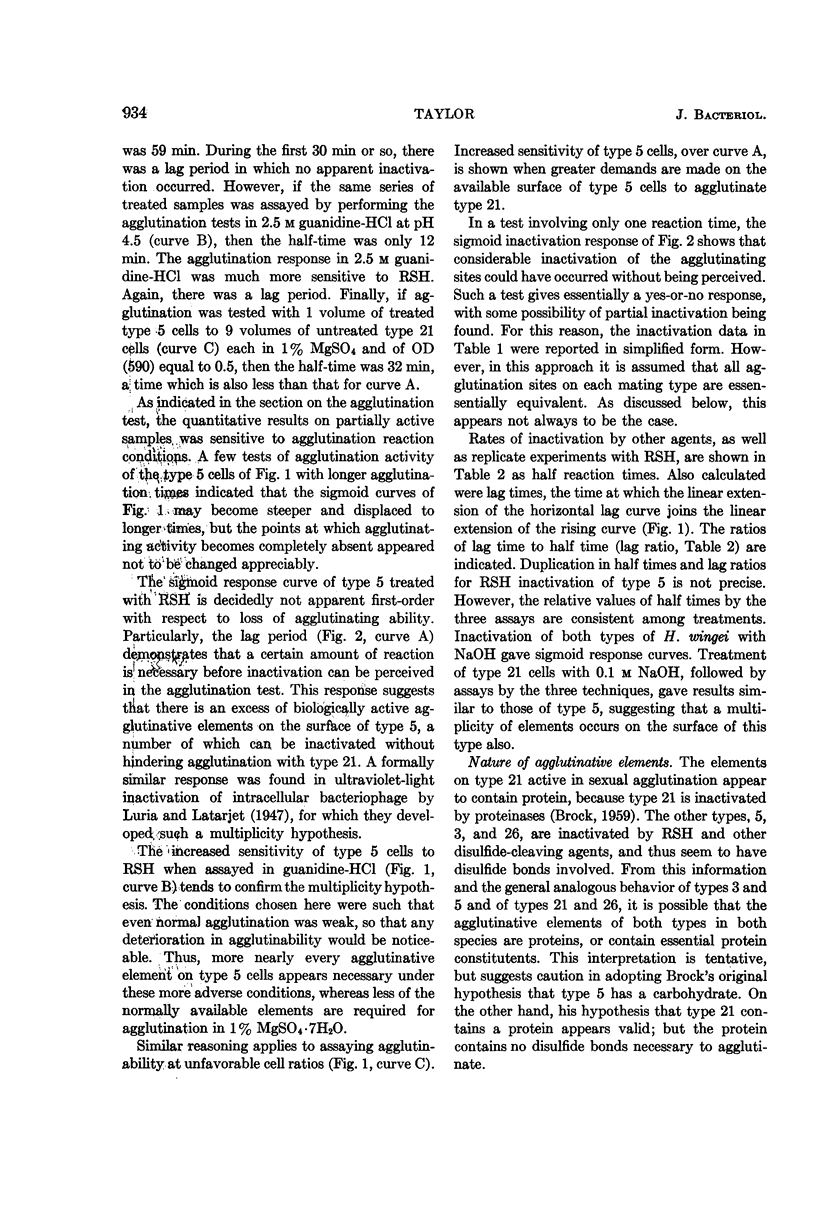
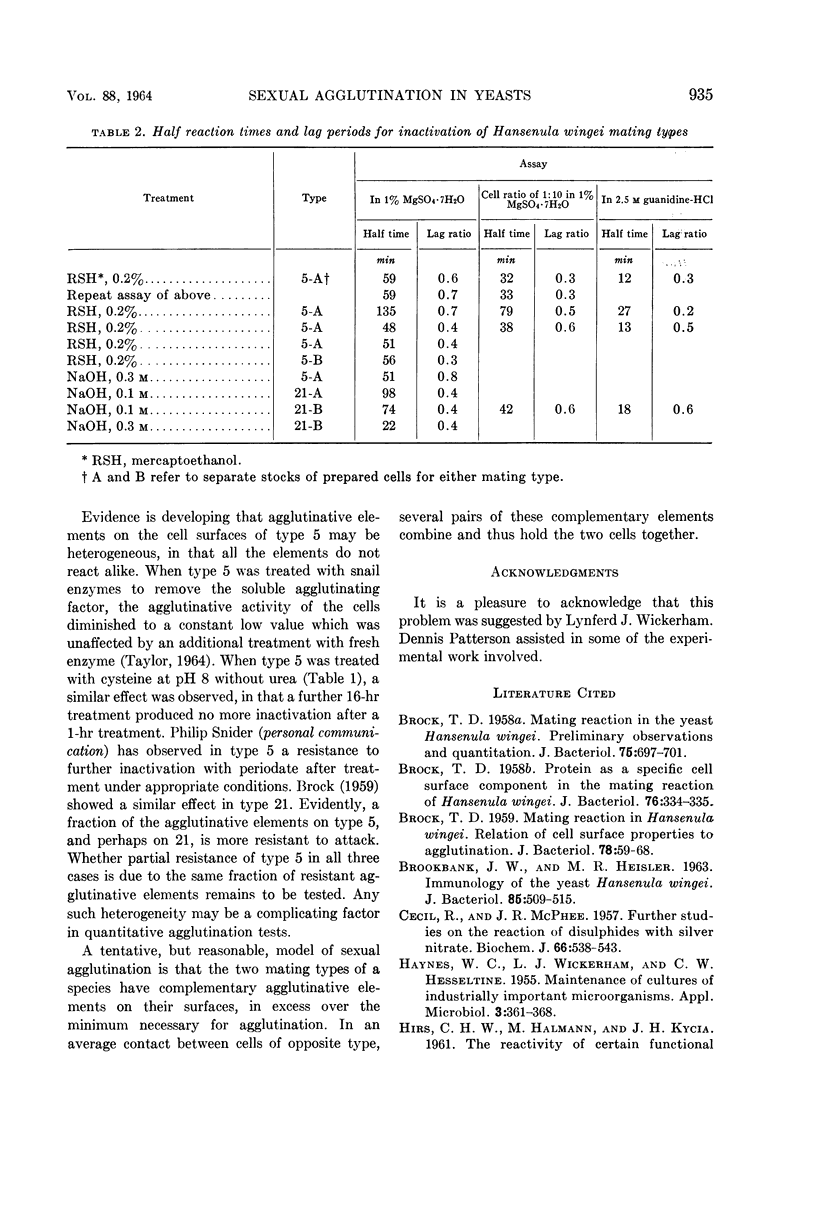
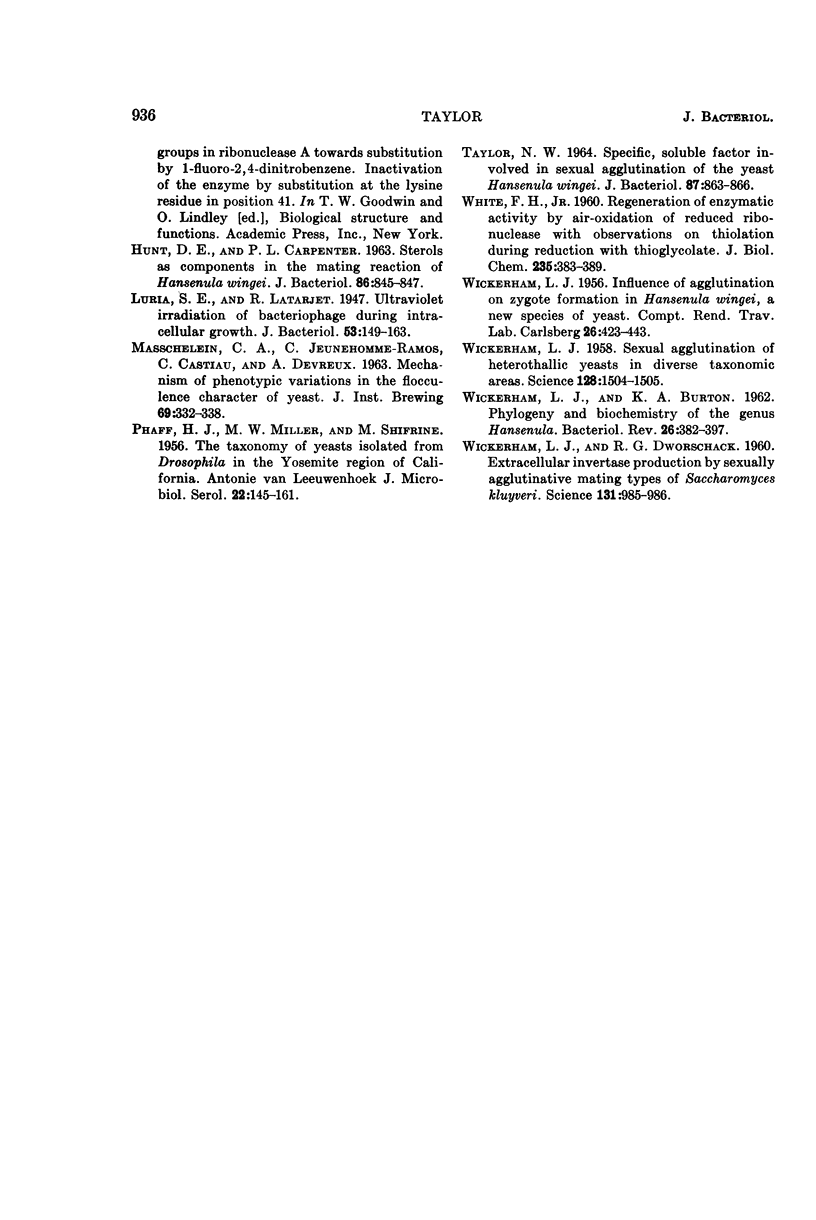
Selected References
These references are in PubMed. This may not be the complete list of references from this article.
- BROCK R. D. Protein as a specific cell surface component in the mating reaction of Hansenula wingei. J Bacteriol. 1958 Sep;76(3):334–335. doi: 10.1128/jb.76.3.334-335.1958. [DOI] [PMC free article] [PubMed] [Google Scholar]
- BROCK T. D. Mating reaction in Hansenula wingei; relation of cell surface properties to agglutination. J Bacteriol. 1959 Jul;78(1):59–68. doi: 10.1128/jb.78.1.59-68.1959. [DOI] [PMC free article] [PubMed] [Google Scholar]
- BROCK T. D. Mating reaction in the yeast Hansenula wingei; preliminary observations and quantitation. J Bacteriol. 1958 Jun;75(6):697–701. doi: 10.1128/jb.75.6.697-701.1958. [DOI] [PMC free article] [PubMed] [Google Scholar]
- BROOKBANK J. W., HEISLER M. R. IMMUNOLOGY OF THE YEAST HANSENULA WINGEI. J Bacteriol. 1963 Mar;85:509–515. doi: 10.1128/jb.85.3.509-515.1963. [DOI] [PMC free article] [PubMed] [Google Scholar]
- CECIL R., McPHEE J. R. Further studies on the reaction of disulphides with silver nitrate. Biochem J. 1957 Jul;66(3):538–543. doi: 10.1042/bj0660538. [DOI] [PMC free article] [PubMed] [Google Scholar]
- HAYNES W. C., WICKERHAM L. J., HESSELTINE C. W. Maintenance of cultures of industrially important microorganisms. Appl Microbiol. 1955 Nov;3(6):361–368. doi: 10.1128/am.3.6.361-368.1955. [DOI] [PMC free article] [PubMed] [Google Scholar]
- HUNT D. E., CARPENTER P. L. STEROLS AS COMPONENTS IN THE MATING REACTION OF HANSENULA WINGEI. J Bacteriol. 1963 Oct;86:845–847. doi: 10.1128/jb.86.4.845-847.1963. [DOI] [PMC free article] [PubMed] [Google Scholar]
- Luria S. E., Latarjet R. Ultraviolet Irradiation of Bacteriophage During Intracellular Growth. J Bacteriol. 1947 Feb;53(2):149–163. doi: 10.1128/jb.53.2.149-163.1947. [DOI] [PMC free article] [PubMed] [Google Scholar]
- PHAFF H. J., MILLER M. W., SHIFRINE M. The taxonomy of yeasts isolated from Drosophila in the Yosemite region of California. Antonie Van Leeuwenhoek. 1956;22(2):145–161. doi: 10.1007/BF02538322. [DOI] [PubMed] [Google Scholar]
- TAYLOR N. W. SPECIFIC, SOLUBLE FACTOR INVOLVED IN SEXUAL AGGLUTINATION OF THE YEAST HANSENULA WINGEI. J Bacteriol. 1964 Apr;87:863–866. doi: 10.1128/jb.87.4.863-866.1964. [DOI] [PMC free article] [PubMed] [Google Scholar]
- WHITE F. H., Jr Regeneration of enzymatic activity by airoxidation of reduced ribonuclease with observations on thiolation during reduction with thioglycolate. J Biol Chem. 1960 Feb;235:383–389. [PubMed] [Google Scholar]
- WICKERHAM L. J., BURTON K. A. Phylogeny and biochemistry of the genus Hansenula. Bacteriol Rev. 1962 Dec;26:382–397. doi: 10.1128/br.26.4.382-397.1962. [DOI] [PMC free article] [PubMed] [Google Scholar]
- WICKERHAM L. J., DWORSCHACK R. G. Extracellular invertase production by sexually agglutinative mating types of Saccharomyces kluyveri. Science. 1960 Apr 1;131(3405):985–986. doi: 10.1126/science.131.3405.985. [DOI] [PubMed] [Google Scholar]
- WICKERHAM L. J. Sexual agglutination of heterothallic yeasts in diverse taxonomic areas. Science. 1958 Dec 12;128(3337):1504–1505. doi: 10.1126/science.128.3337.1504. [DOI] [PubMed] [Google Scholar]


